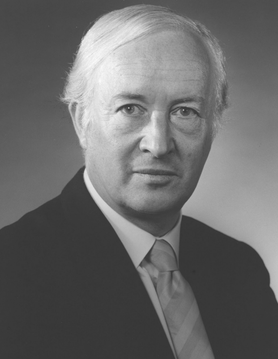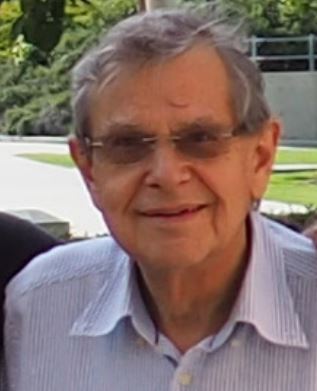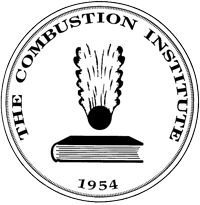
Stephen Arthur Cook is an American-Canadian computer scientist and mathematician who has made significant contributions to the fields of complexity theory and proof complexity. He is a university professor emeritus at the University of Toronto, Department of Computer Science and Department of Mathematics.
Norbert Peters was a professor at RWTH Aachen University, Germany and one of the world-wide authorities in the field of combustion engineering. He headed the Institut für Technische Verbrennung (Institute for Combustion Technology). Born in Linz, Austria, he was educated at the Karlsruhe University of Technology and later at the Technical University of Berlin. He worked in Rourkela Steel Plant for six months.
Howard Wilson Emmons (1912–1998) was an American professor in the department of Mechanical Engineering at Harvard University. During his career he conducted original research on fluid mechanics, combustion and fire safety. Today he is most widely known for his pioneering work in the field of fire safety engineering. He has been called "the father of modern fire science" for his contribution to the understanding of flame propagation and fire dynamics. He also helped design the first supersonic wind tunnel, identified a signature of the transition to turbulence in boundary layer flows, and was the first to observe compressor stall in a gas turbine compressor. He initiated studies on diffusion flames inside a boundary layer, and Emmons problem is named after him. He was eventually awarded the Timoshenko Medal by the American Society of Mechanical Engineers and the 1968 Sir Alfred Egerton Gold Medal from The Combustion Institute.
Jürgen Warnatz was a German physicist. Between 1999 and 2004 he served as managing director of the Interdisciplinary Center for Scientific Computing (IWR) at Ruprecht Karls University of Heidelberg, Germany. From 2003 until his death he chaired the German Section of the Combustion Institute.

John Frederick Clarke FRS was a professor, an aeronautical engineer, and a pilot.
The laminar flamelet model is a mathematical method for modelling turbulent combustion. The laminar flamelet model is formulated specifically as a model for non-premixed combustion
The Darrieus–Landau instability or hydrodynamic instability is an instrinsic flame instability that occurs in premixed flames, caused by the density variation due to the thermal expansion of the gas produced by the combustion process. In simple terms, the stability inquires whether a steadily propagating plane sheet with a discontinuous jump in density is stable or not. It was predicted independently by Georges Jean Marie Darrieus and Lev Landau. Yakov Zeldovich notes that Lev Landau generously suggested this problem to him to investigate and Zeldovich however made error in calculations which led Landau himself to complete the work.
The Proceedings of the Combustion Institute are the proceedings of the biennial Combustion Symposium put on by The Combustion Institute. The publication contains the most significant contributions in fundamentals and applications, fundamental research of combustion science and combustion phenomena. Research papers and invited topical reviews are included on topics of reaction kinetics, soot, PAH and other large molecules, diagnostics, laminar flames, turbulent flames, heterogenous combustion, spray and droplet combustion, detonations, explosions & supersonic combustion, fire research, stationary combustion systems, internal combustion engine and gas turbine combustion, and new technology concepts. The editors-in-chief are Daniel C. Haworth and Terese Løvås.
Sébastien Candel is a French physicist, Emeritus Professor of École Centrale Paris.
Manohar Lal Munjal is an Indian acoustical engineer, honorary professor, and INSA senior scientist at the Facility for Research in Technical Acoustics (FRITA) of the Indian Institute of Science. He is known for his studies on aeroacoustics and finite wave analysis of exhaust systems. He is an elected fellow of all the three major Indian science academies viz. Indian Academy of Sciences, Indian National Science Academy, National Academy of Sciences, India as well as the Indian National Academy of Engineering. He has published three books viz. Noise and Vibration Control, Acoustics of Ducts and Mufflers With Application to Exhaust and Ventilation System Design, and IUTAM Symposium on Designing for Quietness and has contributed chapters to books edited by himself and others. The Council of Scientific and Industrial Research, the apex agency of the Government of India for scientific research, awarded him the Shanti Swarup Bhatnagar Prize for Science and Technology, one of the highest Indian science awards for his contributions to Engineering Sciences in 1986.

Forman Arthur Williams is an American academic in the field of combustion and aerospace engineering who is Emeritus Professor of Mechanical and Aerospace Engineering at the University of California San Diego.
Amable Liñán Martínez is a Spanish aeronautical engineer considered a world authority in the field of combustion.
Moshe Matalon is an Israeli-American mechanical engineer and applied mathematician, currently the Caterpillar Distinguished Professor at University of Illinois at Urbana–Champaign.
Wilbur Hering Armacost, Jr. was an American mechanical engineer, vice president-consultant of Combustion Engineering, Inc., New York, and inventor. He is known as pioneer developer of materials adaptable to high temperatures and pressure, and designer of high-temperature high-pressure steam engines. He was recipient of the 1958 ASME Medal for distinguished service in engineering and science.
John David Buckmaster is an Emeritus Professor of Department of Aerospace Engineering at University of Illinois, specialized in the field of combustion He finished his bachelor's degree from Imperial College London in 1962 and completed PhD under the supervision of Geoffrey S. S. Ludford from Cornell University in 1969.
In combustion, flame stretch is a quantity which measures the amount of stretch of the flame surface due to curvature and due to the outer velocity field strain. The early concept of flame stretch was introduced by Karlovitz in 1953, although the correct definition was introduced two decades later by Forman A. Williams in 1975. George H. Markstein studied flame stretch by treating the flame surface as a hydrodynamic discontinuity. The flame stretch is also discussed by Bernard Lewis and Guenther von Elbe in their book. All these discussions treated flame stretch as an effect of flow velocity gradients. The stretch can be found even if there is no velocity gradient, but due to the flame curvature. So, the definition required a more general formulation and its precise definition was first introduced by Forman A. Williams in 1975 as the ratio of rate of change of flame surface area to the area itself
Gregory I. Sivashinsky is a professor at Tel Aviv University, working in the field of combustion and theoretical physics.
Paul Clavin is a French scientist at Aix-Marseille University, working in the field of combustion and statistical mechanics. He is the founder of Institute for Research on Nonequilibrium Phenomena (IRPHE).

Bernard Lewis (1899-1993) was a major figure in the field of combustion and a founding member of The Combustion Institute.
In the study of diffusion flame, Liñán's equation is a second-order nonlinear ordinary differential equation which describes the inner structure of the diffusion flame, first derived by Amable Liñán in 1974. The equation reads as




